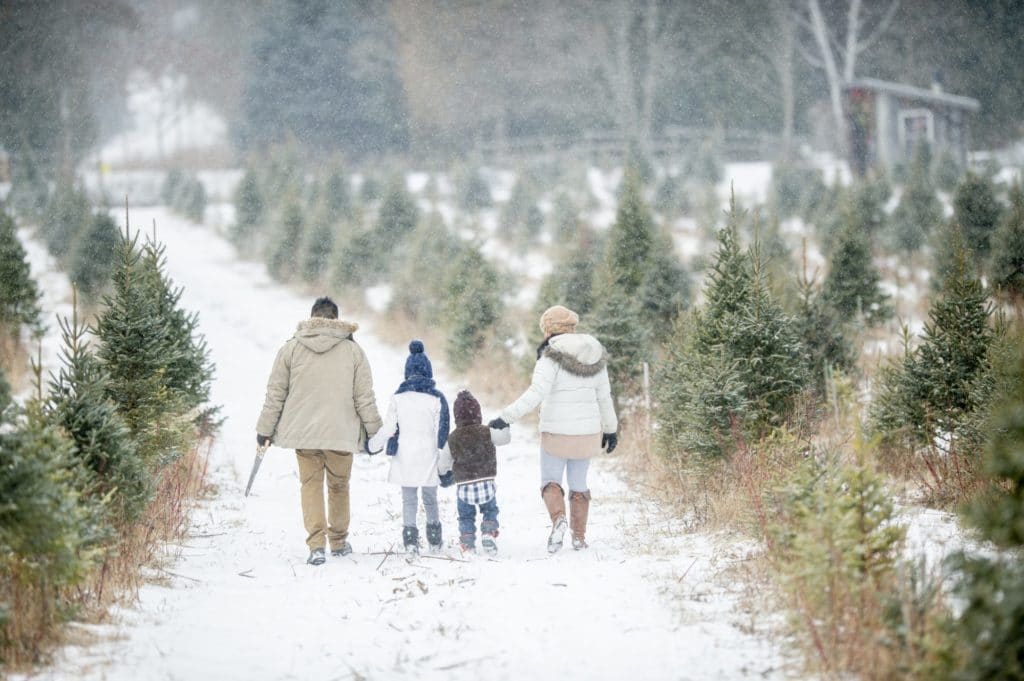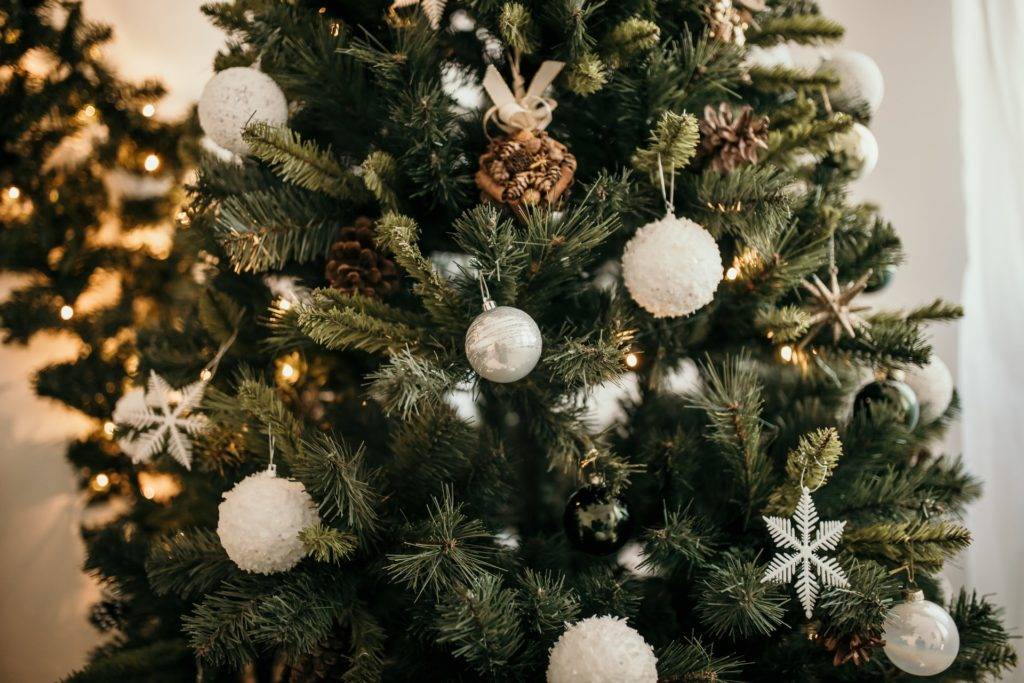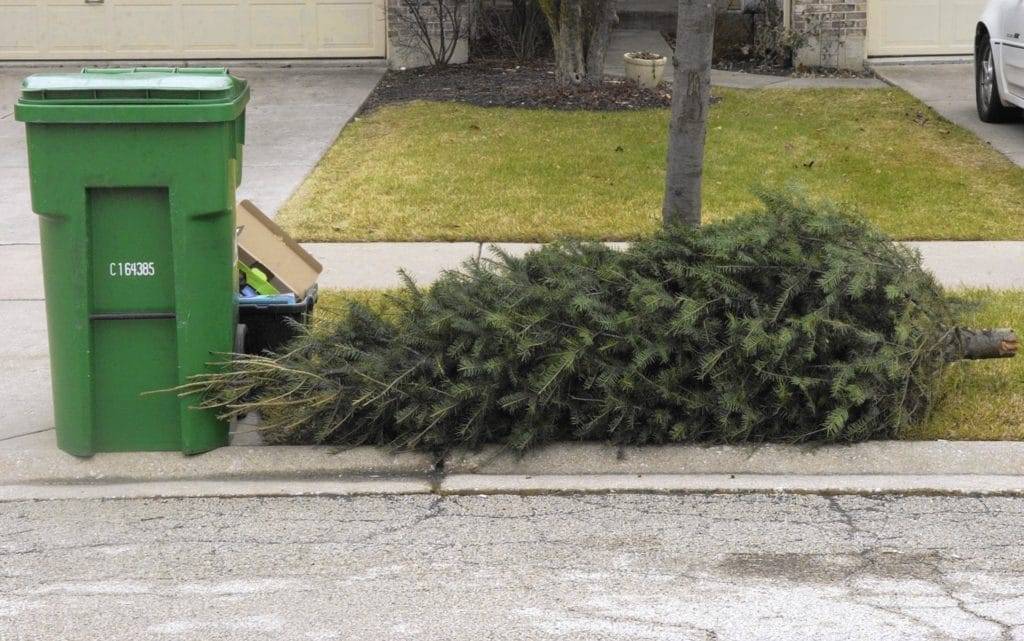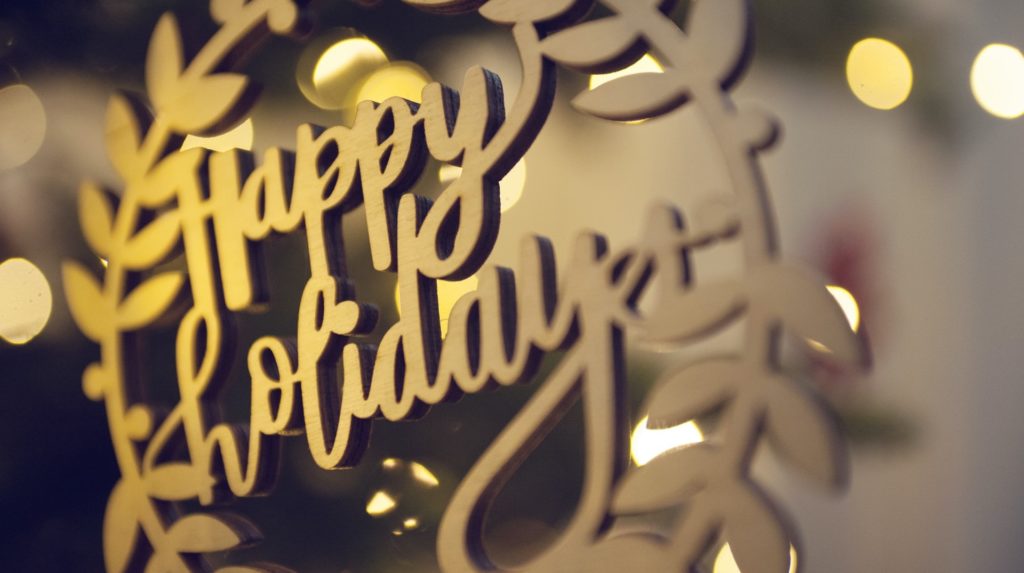With the holiday season in full swing, you might be wondering: Should I buy a real or artificial Christmas tree? A majority of Americans decorate a Christmas tree for the holidays, but you may not have considered whether a real or fake tree is better for the health of your family and the environment.
This year, we decided to look into the health and environmental impacts of real vs artificial Christmas trees. In this article, we’ll explore the history, production, and disposal of real and artificial Christmas trees, and we’ll share some tips to help you reduce your carbon footprint and have a “green” Christmas!
So, should you buy a real or artificial Christmas tree? Let’s find out, starting with a little background on the subject.
Predecessors of the Christmas tree date all the way back to ancient Rome, but their modern conception comes from 16th-century Germany. Early Christmas trees were adorned with apples, candy canes, and festively shaped pastries — decidedly more edible decor than the current fashion of lights and ornaments. Hessian soldiers brought the tradition from Germany to North America during the Revolutionary War, and by the 19th century, Christmas trees were popular throughout the young United States.
All Christmas trees were real until Germany innovated again, inventing artificial trees in the 19th century. The first artificial Christmas trees were crafted from goose feathers dyed green to mimic evergreen boughs. Fast forward to the present, and you can now buy an artificial Christmas tree made of PVC, optic fiber, mylar, cardboard, glass — you name it!
Today, over three-quarters of American homes display a Christmas tree during the holidays, and over 80 percent of those trees are artificial. The trend is clearly towards artificial Christmas trees, but that may not be the healthiest option for your family or the environment. Here’s why.
At face value, artificial trees sound like a win-win proposition. Obviously, you don’t need to feel a real tree to get an artificial tree. Sounds pretty green! Even better, you can reuse your artificial tree and save another tree every year. However, these perceived benefits are based on the notion that chopping down a real tree is bad for the environment. In fact, it’s quite the opposite.

Real Christmas trees are actually grown on farms, like the produce you buy at the supermarket. It takes about eight years for the trees to grow to popular heights of five to seven feet, so the Christmas tree industry maintains an expansive forest habitat that might otherwise not exist. According to The Nature Conservancy, “Out of the 350-500 million growing on tree farms across the U.S., only 30 million trees are harvested for Christmas each year.”
Christmas tree farming occurs in all 50 states, so buying a real tree is more akin to patronizing your local farmers’ market, rather than supporting large-scale deforestation. Buying a real tree helps to incentivize those farmers to continue growing trees, capturing carbon, and providing more healthy forest habitat where wildlife can thrive. That’s all good stuff!
If real Christmas trees are a crop, does that mean they’re sprayed with pesticides? Unfortunately, yes. As Dr. Nathan Donley outlines in this 2019 article, real trees are sprayed with some pretty nasty stuff to help them grow successfully. But if proper farming practices are followed, the pesticides should not be around when you bring your tree home.
Pesticides are labeled with a “pre-harvest interval” which tells farmers when they can apply their last spray before harvest. Christmas trees are last sprayed in the spring or summer, which gives the pesticides time to break down before the trees are cut and sold. According to Jeffrey Jenkins, Ph.D., an environmental toxicologist and professor at Oregon State University, “These products [pesticides] have been evaluated by the EPA and they have a very long and involved process for evaluating potential impacts on human health.”
So yes, pesticides are used on Christmas trees, but it’s not a major cause for concern. In his article, Dr. Nathan Donley states confidently that “the last thing you should do is go out and buy a new plastic tree. That is by far the worst choice for your health and the environment.” Here’s why.

Artificial trees are manufactured. Most artificial trees are made of PVC, or polyvinyl chloride, which is a non-recyclable, non-biodegradable plastic. When PVC is manufactured, burned, or landfilled, harmful dioxins are released, potentially leading to developmental and reproductive problems in humans and animals. This is definitely not good for your health or the environment.
To make matters worse, most artificial trees are produced overseas. That means less money goes to local farmers, and more fossil fuels are burned to ship the fake trees to be sold in the US.
As far as production goes, real Christmas trees are the clear winner over artificial trees for personal and environmental health.

Real or artificial, chances are you have a tree. When the holidays are over, what do you do with it?
With an artificial tree, you can pack it away for next year. In addition to the convenience of simply pulling your tree from storage, reusing the same artificial tree over a period of years helps to diminish the environmental impact of its initial production. That is, as long as you’re not buying a new artificial tree every year.
If you do get rid of an artificial tree, it will likely end up in a landfill. As we mentioned previously, the PVC from which your fake tree is made is not recyclable, and it is prone to releasing negative chemical compounds into the environment. In short, if you’re going to buy an artificial tree, make sure it’s something you’ll be happy to use for a long time.
If you go with a real Christmas tree, you have a few environmentally friendly options to get rid of it. Real trees are recyclable, and most municipalities offer curbside pickup of real trees after the holidays. For info on how and where to recycle your tree in San Francisco, see this article from the SF Environmental Department.
Another green option is a real, potted Christmas tree. Potted trees are live trees that you can decorate and nurture for the holidays, then plant in your yard and watch it grow. The downside is that they tend to be on the small side, as a large tree would be heavy and require a hefty pot. But if you have a hankering for the real thing, and you have a place to plant it, a potted Christmas tree is a great option.
From production to disposal, real trees have less negative impact on the environment than artificial trees. Of course, there are a few more factors to consider when you make your next Christmas tree purchase. Let’s wrap up by listing out the pros and cons we’ve listed, and a few more for good measure.
For the most environmentally friendly Christmas, we recommend purchasing a real Christmas tree. If you must use an artificial tree, or if you already have one, try and use it for as many years as possible to minimize the negative environmental impact.
While the Christmas tree is not ubiquitous, it is certainly a centerpiece of holiday cheer in our households, and maybe in yours too! We hope this article can help you make green decisions in your holiday decorating endeavors this year and into the future. And when the time comes to rethink your living arrangements, we hope you’ll think of the Danielle Lazier Real Estate Team as your trusted adviser in real estate decisions as well. Let us know how we can help!

Happy holidays!
